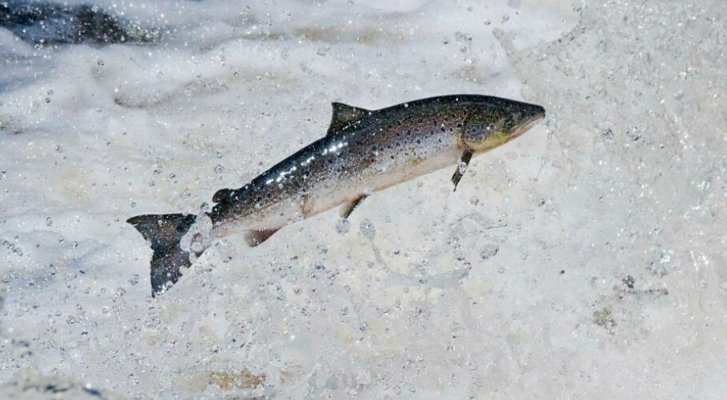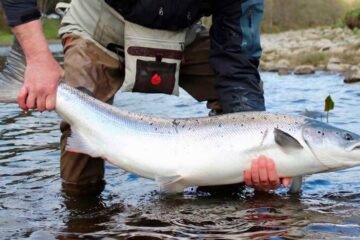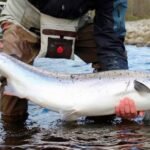Scotland’s salmon farming industry is stepping up efforts to combat the dramatic decline in wild salmon and sea trout populations. Trade group Salmon Scotland has opened applications for a £230,000 conservation fund aimed at river restoration projects across the country, with grants set to support habitat improvements and boost fish survival rates starting in 2026.
Fund Details and Application Process
This new funding round marks the fifth year of the initiative, which forms part of a larger five-year commitment totaling £1.5 million from Scotland’s salmon farmers. The money will go toward practical projects that repair rivers, protect spawning areas, and address long-term threats to wild fish stocks.
Organizations managing river catchments can apply until March 31, 2026. Priority will go to regions where farmed and wild salmon activities overlap, ensuring targeted support where it’s needed most.
Since launching in 2021, the fund has already invested about £705,000 in various restoration efforts. These include removing barriers like weirs and dams that block fish migration, clearing invasive plants from riverbanks, and enhancing water quality to help young salmon survive.

Reasons Behind the Wild Salmon Decline
Wild Atlantic salmon numbers have plummeted across the UK in recent decades. Experts point to multiple factors driving this crisis, including habitat destruction from development and agriculture, which has reduced suitable spawning grounds.
Rising temperatures in rivers and oceans have also played a major role. Marine survival rates for salmon have dropped sharply, from around 25 percent three decades ago to just one to five percent today. This makes it harder for fish to complete their life cycles, from freshwater rivers to the sea and back.
Other pressures include increased predation by birds, seals, and other fish, as well as obstacles like hydroelectric dams that prevent upstream travel. Recent data from 2024 shows Scotland’s salmon production in farms rose by 27 percent, but wild stocks continue to suffer, with total returns to rivers falling from about one million in the 1970s to around 400,000 now.
In England, similar assessments from 2024 highlight critically low salmon levels, urging urgent action. Across Europe, juvenile salmon counts have shown dramatic declines, as seen in surveys on rivers like the Frome in Dorset.
Key Projects and Past Successes
The fund has backed several successful initiatives that demonstrate real impact. For example, a west coast gene bank project received support to preserve genetic diversity among wild salmon and sea trout.
Here are some notable projects funded in recent years:
- Removal of two weirs on the Levern Water, allowing salmon to return to the river for the first time in 170 years.
- Restoration of a 250-meter stretch of the March Burn in Glen Clova, creating two hectares of naturalized habitat.
- Efforts to re-meander straightened rivers, which led to salmon spawning in restored sections within months.
These examples show how targeted funding can quickly revive ecosystems. One project in particular restored meanders to a river, resulting in salmon returning to spawn after 150 years of absence.
Criticisms and Broader Context
Not everyone is fully on board with the fund. Some environmental groups argue that the salmon farming industry itself contributes to wild stock declines through issues like sea lice infestations that affect migrating fish.
Campaigners have raised concerns that the £230,000 represents only a small fraction of the industry’s profits, much of which goes overseas. They call for stronger regulations on aquaculture to protect wild populations.
Despite these debates, the fund aligns with government efforts. Scotland’s policies include measures to manage fishing pressures and conserve salmon in domestic waters. Similar collaborations in England focus on stock assessments and habitat protection.
The crisis extends beyond Scotland. In Ireland, Inland Fisheries Ireland monitors declining Atlantic salmon, while global warming adds pressure worldwide. Recent events, like the rejection of new salmon farms off Skye due to sea lice risks, highlight ongoing tensions between farming and conservation.
Impact on Communities and Economy
River restoration not only helps fish but also benefits local communities. Healthy salmon populations support recreational fishing, which brings in tourism revenue and jobs.
Scotland’s wild salmon are a cultural icon, often called the “king of fish.” Their decline threatens food webs and entire ecosystems, as they serve as a keystone species.
Economically, the farmed salmon sector produced a 27 percent increase in 2024, but sustaining wild stocks could enhance biodiversity and long-term industry stability.
To illustrate the scale of the decline, consider this table of estimated salmon returns to Scottish rivers:
| Decade | Estimated Returns |
|---|---|
| 1970s | 1,000,000 |
| 1990s | 800,000 |
| 2010s | 600,000 |
| 2020s | 400,000 |
This data underscores the urgent need for continued investment.
Future Outlook and Calls for Action
Looking ahead, experts hope the fund will encourage more partnerships between farmers, conservationists, and governments. With applications now open, new projects could further stem the decline and promote recovery.
Broader strategies, like rewilding land and sea areas, are gaining traction. Initiatives such as removing barriers and controlling invasive species offer hope for rebounding populations.
If you found this article insightful, share it with others interested in environmental conservation and drop a comment below on what you think could help save Scotland’s wild salmon.


















